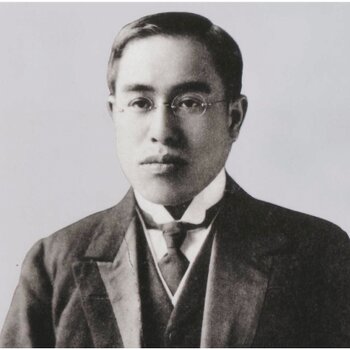History Of Yaskawa
Founder of Yaskawa
Daigorou Yasukawa was the founder of the Yaskawa and started the company in 1915. At first the company’s main focus was electric motors. The first electric motor they build was a 3 phase induction motor. Years later in 1935 the created the Synchronous motor. Yaskawa starts exporting their products after world war 2. In 1950 they made the ”Various Speed” motor. The Minertia motor, introduced in 1958, revolutionized control capabilities by offering a response speed a hundred times faster than conventional models. This pioneering invention became a cornerstone in the development of servo motors, serving as a fundamental component in Yaskawa’s technological repertoire. In 1977, Yaskawa unveiled the groundbreaking MOTOMAN-L10 robot, featuring Japan’s inaugural fully electric system. This innovation laid the foundation for today’s industrial robotics landscape.

Timeline of the Yaskawa’s history
Yaskawa Motoman is a leading global manufacturer of industrial robots, renowned for models like the HP6 and the MA1400. They cover a wide range of production tasks, including welding, assembly, material handling, removal, and palletizing. Here’s a condensed history of their journey:
Yaskawa Motoman’s origins trace back to Japan in the 1970s, initially focusing on electrical equipment. By 1976, they expanded to Europe, penetrating the welding machinery market. Their first articulated robot, the Motoman L10, designed for arc welding, debuted in 1977, featuring 5 axes.
In the 1980s, Yaskawa Motoman made significant strides in robotics. They introduced the RG controller in 1980, capable of handling 6 axes. This controller, along with the L10W robot, marked their entry into the 6-axis realm in 1982. The RX controller, managing up to 8 axes, followed in 1983. By 1985, they released the entire L series, further solidifying their position. The ERC controller and K-series robots debuted in 1988, while 1989 witnessed the introduction of the ArcWorld series, their first line of pre-engineered weld cells, alongside expansion into North America.
Continuing their innovation into the 1990s, Yaskawa Motoman introduced the MRC controller in 1994, capable of controlling 21 axes and coordinating movements of two robots. The SK series, facilitating dual robot operation, was launched the same year. In 1998, they released the highly successful XRC controller, managing up to 27 axes and synchronizing multiple robots. The XRC controller paired with the UP series, introduced in the same year, offering simple arm design for various applications.
The 2000s saw Yaskawa Motoman expanding their robot lines with expert welders like the EA and ES series in 2001. The NX100 controller, introduced in 2004, advanced controller capabilities with its ability to manage 36 axes. In 2006, they revolutionized robotic manipulator arms with the DA20, featuring two robot arms. The decade concluded with the release of the VA1400 and SDA10 robots in 2009.
In recent years, Yaskawa has continued to push the boundaries of robotic technology. They introduced the FS100 controller and MPP3 robot for high-speed picking and packing in 2011. 2015 saw the introduction of the DX200 controller, powering various robot models like the MH24 and MH215. Recent advancements include the YRC1000 controller, HC and GP collaborative robot lines, and updated ArcWorld workcells.